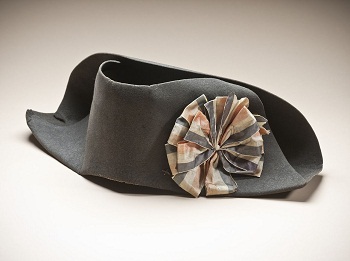How are you?
On every Thursday,
I am introducing the stories about various artists and their paintings with the
title “Interesting
Art Stories”.
The 42nd story for
this week is “Liberty
Leading the People” by Eugène Delacroix.
 |
| Self-portrait, Eugene Delacroix |
“Liberty Leading the People” is a painting by Eugène Delacroix commemorating the July Revolution of 1830 that overthrew King Charles X of France.
 |
| King Charles X of France |
A woman of the
people with a Phrygian cap personifying Liberty is leading a varied group of
people forwarding over a barricade and fallen bodies, holding the flag of the
French Revolution, the tricolour that becomes France's national flag after the
revolution in one hand, and brandishing a bayonetted musket in other hand.
 |
| Tricolour, Flag of France |
Delacroix portrayed Liberty
as both an allegorical goddess and a robust woman of the people. In the
painting, the mound of corpses and wreckage serves as her pedestal, and the
Phrygian cap she wears was used to symbolize liberty during the first French
Revolution in 1789.
 |
| Prisoner with Phrygian cap |
The fighters are a mixture of people from various social classes, from the bourgeoisie represented by the young man in a top hat, a student from the prestigious École Polytechnique wearing the traditional bicorne, to the revolutionary urban worker, exemplified by the boy with pistols.
 |
| Winston Churchill in a frock coat with grey top hat |
 |
| Early bicorne (c.1790) |
In addition to the flag held by Liberty, another small
tricolour can be seen in the distance flying from the towers of Notre Dame.
 |
| Notre-Dame de Paris |
There have been many
discussions about the identity of the man wearing the top hat, and one of the
claims that it was Delacroix himself has been excluded by modern art
historians. Other claims have been made as the theatre director Étienne Arago
and the future curator of the Louvre, Frédéric Villot, but to date no firm
consensus has been made.
 |
| Étienne Arago |
 |
| Frédéric Villot |
The French government
purchased the painting in 1831 with the plan to display it in the throne room
of the Palais du Luxembourg to remind king Louis-Philippe, who gained power
through the French Revolution, and then it returned to Delacroix after the June
Rebellion of 1832.
 |
| Louis Philippe I |
 |
| Palais du Luxembourg |
Subsequently, the painting
was exhibited in the Paris Salon of 1855 and was then included in the
collection of Palais du Louvre in Paris in 1874.
 |
| Palais du Louvre |
The painting was the
featured work in an exhibition titled “French Painting 1774–1830: The Age of
Revolution” organized by the French government, the Metropolitan Museum of Art
in New York and the Detroit Institute of Arts between 1974 and 1975 to
commemorate the Bicentennial anniversary of the founding of the United States.
 |
| The Metropolitan Museum of Art |
 |
| Detroit Institute of Arts |
The painting influenced
Victor Hugo's 1862 novel "Les Misérables", and the character Gavroche
is said to be inspired by the pistols-wielding boy in the painting.
 |
| Illustration of Gavroche, Émile Bayard |
The painting inspired
"Liberty Enlightening the World", known as the Statue of Liberty in
New York City, designed by Frédéric Auguste Bartholdi and was given to the
United States from France.
 |
| Statue of Liberty |
 |
| Frédéric Auguste Bartholdi |
The part of the painting
with a depiction of Delacroix was featured on the 100 franc note from 1978 to
1995.
 |
| 100 franc note, Eugene Delacroix |
The painting was used for
the cover of the 2008 album "Viva la Vida or Death and All His
Friends" by the English alternative rock band Coldplay.
 |
| Viva la Vida or Death and All His Friends, Coldplay (2008) |
The cover of the book
"Enough is Enough: How to Build a New Republic" by Fintan O'Toole,
depicting personification of Ireland “Kathleen Ni Houlihan” holding the Irish
tricolour, and the leaders of the three main political parties at the time,
Brian Cowen, Enda Kenny and Eamon Gilmore lying on the ground, refers to the
painting.
 |
| Enough is Enough: How to Build a New Republic, Fintan O'Toole |
 |
| Scene From Yeats and Gregory's play, Cathleen Ní Houlihan (c.1912) |
Thank you.
Remarks: From January 1 to 10, 2021, I will stop my posting due to personal schedule, and then from January 11, 2021, the current daily postings for a week will be posted every Monday, Wednesday, and Friday over two weeks.
Happy New Year!!!













